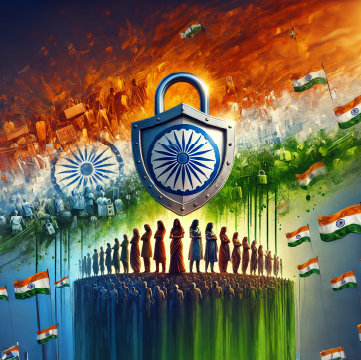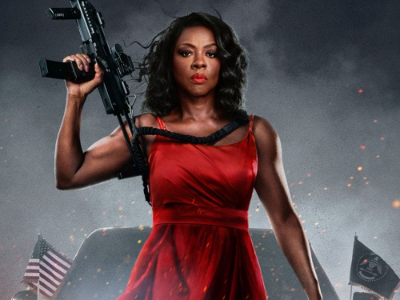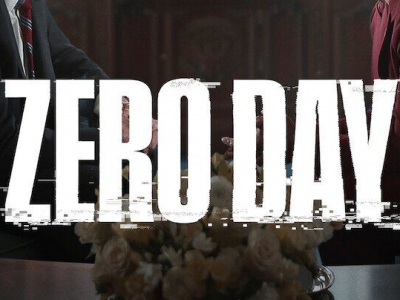The United States Secret Service (USSS) is one of the most well-known federal law enforcement agencies, primarily recognized for its role in protecting the President of the United States. However, its functions extend far beyond this. The Secret Service operates as a sophisticated risk and crisis management entity, ensuring the safety and security of the nation’s top officials. This article explores the operational mechanisms of the Secret Service, draws parallels with corporate risk management, and highlights the role of the Director of the Secret Service as akin to a Chief Risk Officer (CRO) in a corporate setting.
The Role of the Secret Service in Risk and Crisis Management
The Secret Service’s mission encompasses two primary areas: protection and investigation. In the context of risk and crisis management, the protective mission is particularly significant. The Secret Service provides security to the President, Vice President, their immediate families, visiting foreign dignitaries, and other designated individuals. This involves a comprehensive approach to identifying, assessing, and mitigating risks.
Risk Identification and Assessment
The first step in the Secret Service’s risk management process is identifying potential threats. This involves intelligence gathering from various sources, including federal, state, local, and international agencies. The Secret Service uses advanced analytics and threat assessment models to evaluate the credibility and severity of potential threats. This process is akin to a corporate risk management team identifying and assessing risks that could impact the organization’s objectives.
For example, during a Presidential visit to a foreign country, the Secret Service collaborates with local security forces, analyzes political climates, and assesses historical data on threats in that region. This is similar to a company expanding into a new market and conducting risk assessments to understand the local business environment and potential risks.
Mitigation Strategies
Once risks are identified, the Secret Service develops strategies to mitigate them. This includes physical security measures, such as securing locations, conducting thorough background checks on individuals who may come into contact with the protectees, and using advanced technology to detect and neutralize potential threats.
One notable example is the comprehensive security planning for Presidential inaugurations. The Secret Service works with multiple agencies to create secure perimeters, employ surveillance, and prepare for various scenarios, ensuring a seamless and safe event. Similarly, in the corporate world, a risk management team might develop business continuity plans, implement cybersecurity measures, and establish internal controls to mitigate risks.
Crisis Management
Despite the best preventive measures, crises can still occur. The Secret Service is trained to respond swiftly and effectively to any threats or incidents. This involves well-rehearsed protocols and coordination with other agencies to manage the situation and ensure the safety of the protectees.
A notable instance of crisis management was the response to the assassination attempt on President Ronald Reagan in 1981. The Secret Service agents’ quick and decisive actions to neutralize the threat, evacuate the President, and secure the area exemplify their crisis management capabilities. In a corporate setting, this is comparable to a company’s response to a significant cybersecurity breach, where immediate action is taken to contain the breach, protect data, and communicate with stakeholders.
Parallels to Corporate Risk Management
The operational approach of the Secret Service can be closely compared to risk management in corporate organizations. The Director of the Secret Service can be seen as a Chief Risk Officer (CRO), responsible for overseeing and managing risks to the organization’s leadership and operations.
Strategic Planning and Risk Culture
In both the Secret Service and corporate settings, strategic planning is crucial. The Secret Service must constantly update its strategies to adapt to evolving threats, much like how a CRO must ensure that a company’s risk management strategies align with its business objectives and changing market conditions.
Additionally, fostering a risk-aware culture is essential. The Secret Service trains all its personnel to recognize and respond to potential threats, instilling a sense of vigilance and preparedness. Similarly, a CRO works to create a risk-aware culture within a company, ensuring that all employees understand their role in identifying and managing risks.
Integrated Risk Management
Integrated risk management involves coordinating risk management activities across various functions to ensure a cohesive approach. The Secret Service exemplifies this by working with other federal agencies, local law enforcement, and international partners to provide comprehensive protection. This integrated approach ensures that all potential risks are considered and addressed collaboratively.
In a corporate context, integrated risk management might involve the CRO coordinating with departments such as IT, finance, operations, and compliance to manage risks holistically. This ensures that risk management is not siloed but is a collective effort across the organization.
Examples
Example 1: Presidential Travel
When the President travels, the Secret Service conducts extensive planning and risk assessments. For instance, during President Obama’s trip to India in 2010, the Secret Service worked with Indian authorities to secure multiple venues, establish communication protocols, and prepare for various contingencies. This level of planning is similar to a corporate risk management team preparing for the launch of a new product in a foreign market, where they must understand local regulations, cultural nuances, and potential risks.
Example 2: Cybersecurity
The Secret Service also plays a role in cybersecurity, protecting the information and communication systems used by the President and other top officials. This involves constant monitoring for potential cyber threats and implementing robust security measures. Similarly, digital risk management teams focus on protecting their company’s digital assets, employing firewalls, encryption, and intrusion detection systems to safeguard against cyberattacks.
Example 3: Managing the COVID-19 Pandemic
The COVID-19 pandemic presented unprecedented challenges for the Secret Service, requiring them to adapt quickly to ensure the President’s safety. This involved implementing health protocols, conducting virtual assessments, and coordinating with health agencies. The response to the pandemic can be compared to how corporate risk management teams had to quickly adapt to remote work, supply chain disruptions, and changing regulations, ensuring business continuity while protecting employees and stakeholders.
The Director of the Secret Service as a Chief Risk Officer
The Director of the Secret Service, like a Chief Risk Officer, holds a pivotal role in managing and mitigating risks. This position involves strategic oversight, decision-making, and coordination with various stakeholders to ensure comprehensive risk management.
Strategic Oversight
The Director of the Secret Service is responsible for setting the strategic direction for the agency’s risk management efforts. This includes prioritizing resources, developing long-term plans, and ensuring that the agency remains adaptable to new and emerging threats. Similarly, a CRO sets the strategic direction for a company’s risk management program, aligning it with the overall business strategy and ensuring that it can adapt to changes in the business environment.
Decision-Making
Effective risk management requires timely and informed decision-making. The Director of the Secret Service must make critical decisions during crises, balancing the need for swift action with the importance of thorough analysis. In the corporate world, a CRO makes decisions on risk tolerance, mitigation strategies, and response plans, often under pressure and with limited information.
Coordination and Communication
Coordination with other agencies and communication with stakeholders are essential components of the Director’s role. The Secret Service works closely with various law enforcement and intelligence agencies, ensuring a unified approach to risk management. Similarly, a CRO coordinates with different departments within a company and communicates with senior leadership, the board of directors, and external stakeholders to ensure a cohesive risk management strategy.
Conclusion
The United States Secret Service operates as a sophisticated risk and crisis management function for the President, employing advanced strategies to identify, assess, and mitigate threats. The parallels between the Secret Service’s operations and corporate risk management are striking, with both entities requiring strategic oversight, integrated risk management, and a strong risk-aware culture.
The Director of the Secret Service, much like a Chief Risk Officer in a corporate setting, plays a crucial role in overseeing these efforts, making critical decisions, and ensuring effective coordination and communication. By examining the practices of the Secret Service, corporate risk management professionals can gain valuable insights into how to manage risks in an increasingly complex and interconnected world.
Key Takeaways
- Risk Identification and Assessment: Both the Secret Service and corporate risk management teams must continuously identify and assess potential threats to their respective protectees and organizations.
- Mitigation Strategies: Implementing effective risk mitigation strategies is crucial, whether through physical security measures or internal controls.
- Crisis Management: Preparedness and swift response are essential in managing crises, whether it’s an assassination attempt or a cybersecurity breach.
- Integrated Risk Management: Collaboration across various functions and agencies ensures a comprehensive approach to risk management.
- Strategic Oversight and Decision-Making: Leaders in both settings must provide strategic direction and make informed decisions under pressure.
- Coordination and Communication: Effective risk management requires coordination with stakeholders and clear communication of risks and response strategies.
By understanding and applying these principles, organizations can enhance their risk management capabilities, ensuring resilience and stability in the face of uncertainty.















